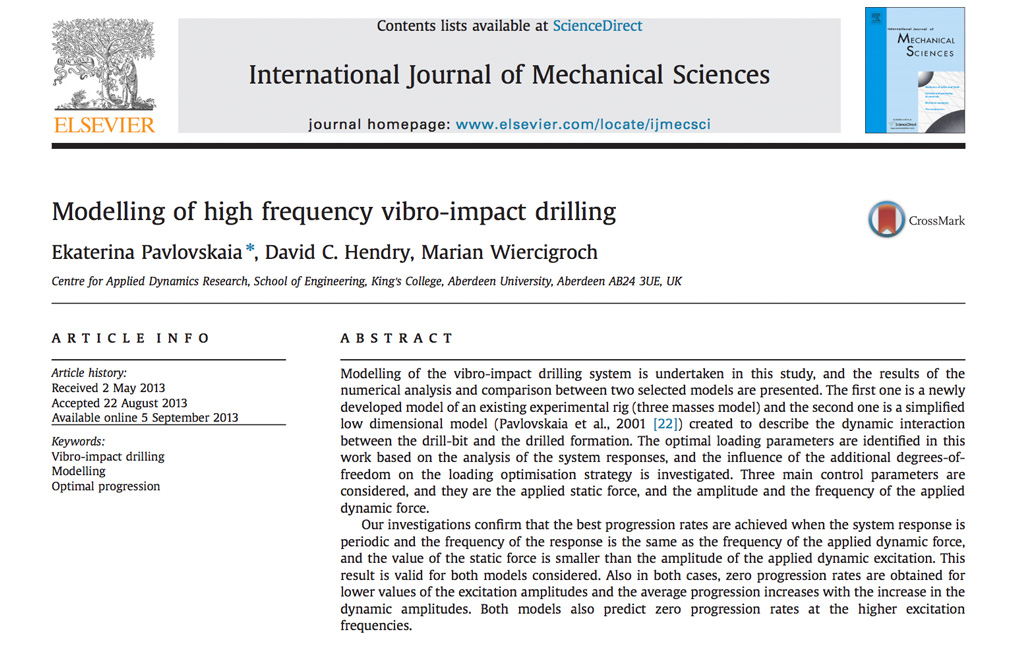Modelling of high frequency vibro-impact drilling

Modelling of high frequency vibro-impact drilling
Modelling of the vibro-impact drilling system is undertaken in this study, and the results of the numerical analysis and comparison between two selected models are presented. The first one is a newly developed model of an existing experimental rig (three masses model) and the second one is a simplified low dimensional model (Pavlovskaia et al., 2001 [22]) created to describe the dynamic interaction between the drill-bit and the drilled formation. The optimal loading parameters are identified in this work based on the analysis of the system responses, and the influence of the additional degrees-of-freedom on the loading optimisation strategy is investigated. Three main control parameters are considered, and they are the applied static force, and the amplitude and the frequency of the applied dynamic force.
Our investigations confirm that the best progression rates are achieved when the system response is periodic and the frequency of the response is the same as the frequency of the applied dynamic force, and the value of the static force is smaller than the amplitude of the applied dynamic excitation. This result is valid for both models considered. Also in both cases, zero progression rates are obtained for lower values of the excitation amplitudes and the average progression increases with the increase in the dynamic amplitudes. Both models also predict zero progression rates at the higher excitation frequencies.
Based on the analysis undertaken, it can be concluded that the low dimensional model provides good estimates of the optimal static force and the amplitude of the dynamic force, and it could be used for the operational control of the drilling system to adjust the loading parameters while drilling through different formations. The choice of the optimal frequency, however, should be made based on the predictions of the more detailed model of the drilling system as additional degrees of freedom significantly influence the structure of the internal resonances and they should be taken into account.
Access to Document
Link to University of Aberdeen Website
Reach Us
Please send an email to the addresses below or use the form to contact us.
Fraser Noble Building, School of Engineering, University of Aberdeen, Kings College Aberdeen AB24 3UE, Scotland, UK
+ 44 (0) 1224 274177
